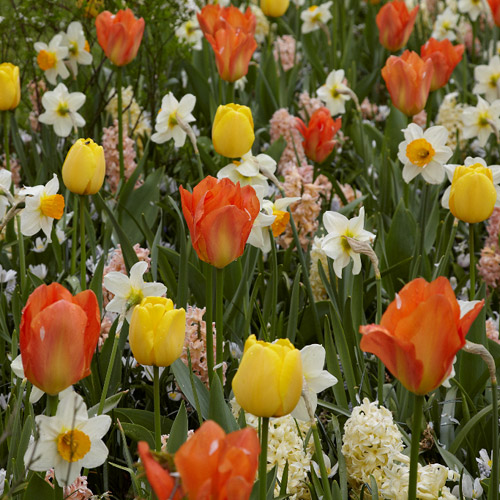I’ve heard people complain that it’s just not worth planting bulbs because they just end up being the first course for a deer’s dinner. Don’t blame it all on the deer, though – squirrels, mice, voles and moles can also be culprits, just waiting to munch on newly planted delicacies.
While it’s true that bulbs can be tasty treats for such garden varmints, there are ways to deal with them and still get the spring blooms of your dreams.
- Choose bulbs that hold no appeal for wildlife. While tulips and lilies are especially delicious, many bulbs have odors that actually repel animals. Almost all daffodils, fritillaria and alliums fall into this category. Other bulbs that seem to survive the animal onslaught include hyacinths, grape hyacinths (muscari), Spanish bluebells, snowflakes (leucojum), Siberian squill and other scillas.
- Even if they won’t eat the bulbs, some animals are attracted to the smell of newly worked soil, hoping for something good to eat. Cover freshly planted bulbs with wire mesh or plastic netting for a few weeks until the soil settles.
- Thwart burrowing animals by planting bulbs in beds lined with chicken wire or in wire-mesh boxes. You can make your own boxes by cutting the bottoms off plastic laundry baskets and replacing them with window screening.
- Be sure your lawn is grub-free. Moles can disturb bulbs while digging for grubs. Mice and voles use the moles’ tunnels as freeways to get to your bulbs and enjoy a hearty meal.
- Put out some peanuts to feed the squirrels. If such munchable morsels are readily available, chances are the squirrels will leave your bulbs alone.
Follow these simple suggestions when choosing and planting your fall bulbs. You can achieve peaceful coexistence with your animal neighbors, and still be rewarded next spring with all the color and beauty fall planted bulbs have to offer.



